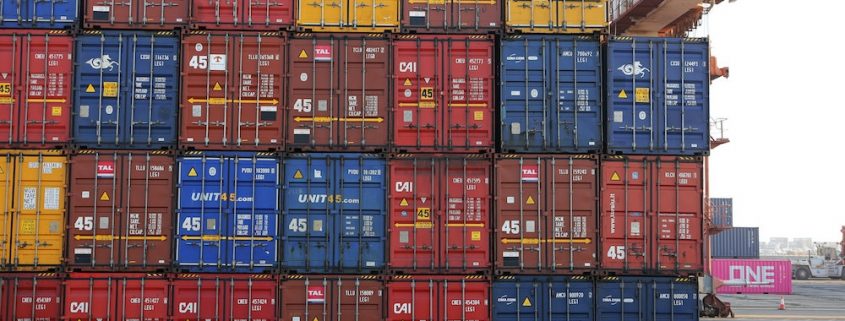Shipping Containers: A Brief History
Shipping containers. They’re a ubiquitous part of our global economy. Most global consumer goods you own have a good chance of having been in a container at some point. Today’s supply chain, built around the shipping container, allows for an efficient distribution of goods worldwide. It hasn’t always been this way, though. In fact, the shipping container as we know it is only around 64 years old. Let’s take a look at the history of the shipping container.
1956: Malcolm McLean and the First Shipping Containers
1956 is an important year for the modern shipping container. This is when Malcolm McLean, owner of a large trucking company, launched the first voyage of a modern container. For decades, McLean had seen the inefficiency of transporting goods in non-standardized wooden crates during the operation of his company. He eventually purchased Pan Atlantic Tanker Company, a company with significant shipping assets, and experimented with ideas for standard shipping box designs. He eventually settled on the idea of a one-sized metal box. This design was sturdy, could be stacked, was easily transferred to trucks and trains for ground shipping, and was secure. In 1956, the ship Ideal X launched, becoming the first container ship to be used with modern containers.
Over the next several years, McLean worked to refine the shipping container design. Containers became fitted to interlock when stacking. He also implemented cranes at dock sites to speed up loading efficiency and safety. These innovations and others helped drive the popular use of container ships as viable methods of shipping.
1968: Modern Container Ships
1968 marks another important point in time for shipping containers. This is the year that the ISO imposed international standards for container dimensions and requirements. With this step, modern containers as we know them became widespread. This standard is relatively similar to standards for today, and is a key reason for mass shipping as we know it. With international standards in place, companies could maximize efficiency in the supply chain. As a result, the cargo shipping industry boomed through the 1970s and 1980s. This boom impacted other transportation modes in the chain too- trucks, trains and planes that carried goods after shipping by sea were transformed to maximize efficiency as well. With standards across multiple modes of transport, containers truly became the key to global shipping that they are today. By the end of the 20th century, shipping containers accounted for around 90% of all cargo globally.
Today and What’s Next
The start of the 21st century has seen continued technological innovations. Today, remote tracking systems are a core aspect of international shipping. Refrigerated shipping has become crucial for distributing fruit and vegetables around the globe, keeping goods cold for weeks at a time. Looking to the future, there are innovative ideas to utilize crewless container ships, blockchain technology, and further automatization to continue improving the industry.
Moon Trailer Leasing offers shipping containers to companies and organizations across Kentucky, Indiana, Ohio and Tennessee. We have containers both for rent and sale. Call 502-776-2199 today for a fast and free quote.




